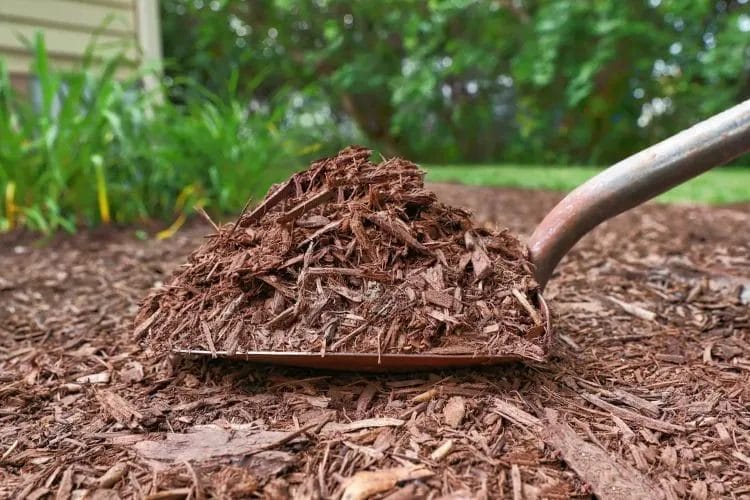
There are a best fertilization tips to feeding your lawn that you can master with clear timing, soil testing, and correct fertilizer choice; this guide gives you step-by-step tips so your turf thrives. You’ll learn application rates, seasonal schedules, and how to coordinate help from Smith Brothers Services, Smith Brothers Landscape, Smith Brothers Tree Services to protect roots and optimize results.
The Science of Soil Health

Soil pH, organic matter and cation exchange capacity (CEC) control how your lawn accesses nutrients: most cool-season grasses thrive at pH 6.0–7.0 while warm-season types do best near 6.0–6.5. Organic matter around 3–6% improves moisture retention and microbial activity, and a higher CEC (meq/100g) helps retain potassium and micronutrients. Working with pros like Smith Brothers Services will highlight local soil texture differences that dictate fertilizer type and timing.
Understanding Nutrient Availability
Nitrogen moves quickly through soil and must be supplied regularly—many lawns need 2–4 lb N per 1,000 sq ft annually—while phosphorus tends to bind to soil, especially below pH 6.0 or above 7.5, reducing plant uptake. Potassium availability links to CEC and clay content; sandy soils leach K and benefit from more frequent, smaller applications. You can use slow-release N, chelated micronutrients, or targeted applications recommended by Smith Brothers Tree Services to match your soil’s holding capacity.
Soil Testing: The Foundation for Fertilizing
Collect 10–15 cores from the top 3–4 inches across each distinct lawn area and submit a composite sample to a university or commercial lab for pH, P, K, Ca, Mg, micronutrients, organic matter and CEC analysis; turnaround is typically 1–2 weeks. Test every 2–3 years or after major amendments. Smith Brothers Landscape, can interpret lab reports and convert recommendations into lb/1,000 sq ft or application rates tailored to your grass type.
After you receive the lab report, focus on actionable numbers: target pH, available phosphorus (ppm), exchangeable potassium (ppm), and CEC. Labs often report P as Bray or Olsen depending on pH; values below threshold trigger specific P rates while high values will recommend delaying phosphorus applications. Use the lab’s lime and fertilizer recommendations—expressed as lb/1,000 sq ft—to plan seasonal applications and split N into multiple events for uptake efficiency. Keeping records of test results and treatments lets you measure response year-to-year and fine-tune programs with guidance from contractors like Smith Brothers Services for fertilizer timing and Smith Brothers Landscape, for cultural practices.
Timing is Everything: The Best Seasons to Fertilize
Plan applications around your grass type: cool-season lawns (tall fescue, perennial ryegrass) respond best to heavier feeding in early fall (Sept–Oct) and a lighter late-fall dressing, aiming for about 1 lb N/1,000 sq ft per application and 3–4 lb N/yr total; warm-season turfs (Bermuda, Zoysia) need the bulk of their fertilizer from late spring through mid-summer (May–July), usually 0.5–1.0 lb N/1,000 sq ft per pass and 2–3 lb N/yr total. Smith Brothers Landscape schedules feedings by species and regional norms.
Recognizing Growth Stages
Identify growth stages by tracking soil temperature and shoot activity: cool-season grasses green up and build roots when soil stays around 55°F, making fall root development ideal, while warm-season varieties kick into active shoot growth once soil reaches 65–70°F. You should time higher nitrogen doses for active shoot growth and favor low-N, higher-K blends in late season to support roots; Smith Brothers Services uses soil tests and turf surveys to match applications to those stages.
Weather Considerations
Watch the forecast and soil moisture before you fertilize: avoid applying within 24–48 hours of predicted heavy rain (>1″ can cause runoff and nutrient loss) and skip feedings during heat waves above 90°F to prevent burn; apply when you can irrigate lightly after application if needed. Smith Brothers Services and Smith Brothers Tree Services coordinate timing around irrigation schedules and storm risk to protect turf and nearby plantings.
Opt for slow‑release products when weather is uncertain—aim for formulas with 50–70% slow‑release nitrogen to reduce leaching during summer storms and to deliver steady growth over 6–12 weeks; on slopes or within 50 feet of water bodies follow buffer rules and local regs, cutting rates by 25% if runoff risk is high. If you prefer hands-off management, a consultation with Smith Brothers Landscape will produce a site‑specific calendar and exact N rates for your lawn.
Choosing the Right Fertilizer
Match product type to your grass species, season and soil test: a test showing pH 6.0 with low P steers you to a starter blend, while an established cool-season turf usually benefits from higher nitrogen (aim for a 3:1:2 ratio). You can have Smith Brothers Services run a lab soil test and recommend granular or liquid formulas by yard size, runoff risk and desired speed of green-up.
Organic vs. Synthetic: Weighing the Pros and Cons
Organic fertilizers feed soil life and slowly release nutrients, giving steadier color over months, whereas synthetic options deliver rapid greening and tightly controlled N percentages for predictable results; you should use organics to build long-term soil structure and synthetics for fast corrections or rainy-season windows. Smith Brothers Landscape often combines both: organics for summer soil health and targeted synthetics for early-spring or repair applications.
Pros and Cons: Organic vs Synthetic
| Organic | Synthetic |
|---|---|
| Slow, steady nutrient release that feeds soil microbes and improves structure | Fast nutrient availability that rapidly greens turf—useful for quick fixes |
| Lower salt index, reducing burn risk around sensitive plants and trees | Higher salt index potential; you must follow label rates to avoid scorch |
| Better long-term soil health, making lawns less dependent on frequent feeding | Minimal soil-building benefits; repeated use focuses on top growth |
| Generally more expensive per unit of available N | Often cheaper per pound of N and available in many ratio options |
| Lower leaching risk; safer near waterways when applied properly | Higher runoff/leaching risk if overapplied or during heavy rain |
| Best for gradual improvement and organic management plans you can maintain | Best for scheduled programs needing predictable results and timing |
| May require larger application volumes to match synthetic N | Precise labels make it easier to calculate lbs N/1,000 sq ft |
| Compatible with overseeding and soil-building programs | Works well for rapid green-up before events or inspections |
The Importance of N-P-K Ratios
N-P-K labels reflect percent nitrogen, phosphorus (as P2O5) and potassium (as K2O); a 24-4-12 product contains 24% N, 4% P and 12% K. You should target higher N for routine lawn growth—common maintenance ratios are around 3:1:2—while new seed benefits from elevated P in starter mixes like 10-20-10 where local regulations allow. Smith Brothers Tree Services and Smith Brothers Landscape advise pairing ratio choice with a soil test.
Use application rates to translate ratios into practical plans: apply 0.5–1.0 lb of actual N per 1,000 sq ft per feeding for cool-season lawns, totaling roughly 2–4 lb N/1,000 sq ft per year; warm-season grasses usually receive most N during summer, totaling about 3–4 lb/1,000 sq ft annually. Fall feedings should favor N and K for root storage—consider blends with a higher K proportion—and always adjust rates if your soil test shows excess P or other deficiencies before adding more.
Application Techniques for Maximum Impact
Even distribution and correct rates deliver visible results faster than higher doses. You should stripe your lawn with a slight overlap pattern to avoid banding, walk at a steady pace for consistent spreader output, and mark boundaries so you don’t double-apply near beds or sidewalks. Smith Brothers Services often recommends splitting seasonal nitrogen into two to four applications—each at roughly 0.5–1.0 lb N per 1,000 sq ft—to sustain green-up without burning turf.
Methods: Granular vs. Liquid Fertilizers
Granular products, like a 10-10-10 mix, give you control—1 lb of nitrogen per 1,000 sq ft requires about 10 lb of that product—while liquids provide faster uptake and easier calibration for odd-shaped areas. You can use granular for slow-release feeding and liquids for quick corrective treatments; Smith Brothers Landscape, often pairs a spring granular application with spot-liquid treatments after aeration or disease events to balance longevity and responsiveness.
The Role of Equipment in Fertilizer Distribution
Choice of equipment defines uniformity: broadcast spreaders cover large turf quickly, drop spreaders give edge-to-edge precision, and boom sprayers handle liquid rates across acres. You should calibrate before use—catch-can or weight methods—and maintain bearings, tires, and nozzles to avoid pattern drift. Smith Brothers Tree Services uses calibrated boom and handheld sprayers for tree-root injections and landscape transitions to ensure correct placement and minimal off-target deposition.
Calibrating a granular spreader can be simple: set the spreader to your product’s label number, walk a measured 25 ft swath, collect product, then scale to lb/1,000 sq ft; for example, collecting 2.5 lb over 250 sq ft equals 10 lb/1,000 sq ft. For liquids, measure nozzle output (oz/min), calculate gallons per 1,000 sq ft at your walking speed, and adjust concentration. You should log settings for repeatability across seasonal applications.
Customizing Your Fertilizer Schedule
Frequency of Application: Finding the Sweet Spot
For cool-season grasses like Kentucky bluegrass, tall fescue and perennial rye, you should aim for 3–4 light nitrogen applications—early spring, late spring, early fall and late fall—applying about 0.5–1.0 lb N/1,000 sq ft each time. Warm-season lawns (Bermuda, zoysia) typically need 1–3 feeds from late spring through mid-summer. Use slow-release nitrogen to reduce leaching; for heavy clay or sandy soils adjust timing. Smith Brothers Services often recommends splitting applications rather than a single heavy dose to keep your turf’s growth steady without burning.
Adjusting for Grass Type and Local Conditions
Match your schedule to species: tall fescue benefits from fall-focused feeding while Bermuda responds best to a late-spring green-up dose. Run a soil test every 2–3 years to check pH and phosphorus; lime applications can raise pH by 0.5–1.0 when levels are below ~6.0. In arid or coastal areas reduce frequency to avoid salt buildup. Local pros like Smith Brothers Landscape, and Smith Brothers Tree Services can perform those tests and recommend exact N-P-K mixes for your yard.
For sandy soils, target about 0.5 lb N/1,000 sq ft per application with 50–70% slow-release nitrogen to limit leaching; clay soils can tolerate 0.75–1.0 lb N/1,000 sq ft per feed. Consider ratios: a 4-1-2 N-P-K supports warm-season leafy growth, while 3-1-2 favors cool-season root development, especially in fall. Track local heat and irrigation—extended heat waves speed nitrogen uptake, so reduce frequency or use more slow-release. If you want a tailored plan based on your soil report, Smith Brothers Services can map a schedule for your exact conditions.
Beyond Fertilizing: Complementary Lawn Care Practices
Complementary practices like aeration, proper mowing height, overseeding and smart irrigation can boost fertilizer uptake by 20–40% and reduce runoff. You should schedule these tasks around your fertilizer calendar—core aerate during active growth, overseed thin areas after a fall application, and adjust mower height to encourage deeper roots. Many homeowners partner with Smith Brothers Services or Smith Brothers Landscape to coordinate these steps so every application delivers visible greening within weeks.
The Interplay of Aeration and Fertilizing
Core aeration removes 2–3 inch plugs and relieves compaction, allowing fertilizer to reach root zones more effectively; you’ll see faster green-up if you aerate before applying a granular feed. Aim for annual aeration on compacted soils—fall for cool-season grasses, late spring for warm-season types—and avoid aerating during drought. Professionals like Smith Brothers Tree Services can help identify areas where tree roots or heavy foot traffic limit fertilization benefits.
Watering Strategies that Enhance Fertilizer Effectiveness
Apply about 1–1.5 inches of water per week to promote 6–8 inch rooting and water in granular fertilizers with 0.25–0.5 inches within 24 hours of application to activate nutrients; schedule irrigation in the early morning (4–10 AM) to cut evaporation and disease risk. Adjust frequency for soil type—sandy soils need shorter, more frequent cycles— and consider an irrigation audit from Smith Brothers Landscape to fine-tune settings.
For sandy soil, target 3 sessions per week of ~0.3–0.4 inches each; for clay, use 1–2 deeper sessions of 0.6–0.8 inches to avoid surface runoff and puddling. Use a rain gauge or empty can to measure output and aim to wet the top 6–8 inches; slow, steady soak encourages deeper roots than short sprays. Avoid applying fertilizer right before a heavy (>1″) storm to reduce leaching; if heavy rain is forecast, delay by 24–48 hours. Smart controllers or soil moisture sensors can cut water use and improve nutrient uptake, and Smith Brothers Services can perform an irrigation tune-up while Smith Brothers Tree Services assesses any tree-root competition affecting moisture distribution.
Summing up
As a reminder, follow consistent mowing, soil testing, proper timing, and targeted fertilizer applications so you can build thicker, healthier turf; monitor watering, control weeds, and adjust for seasonal needs, and consult professionals when needed—contact Smith Brothers Services, Smith Brothers Landscape, or Smith Brothers Tree Services to tailor a program for your lawn and protect your investment.





